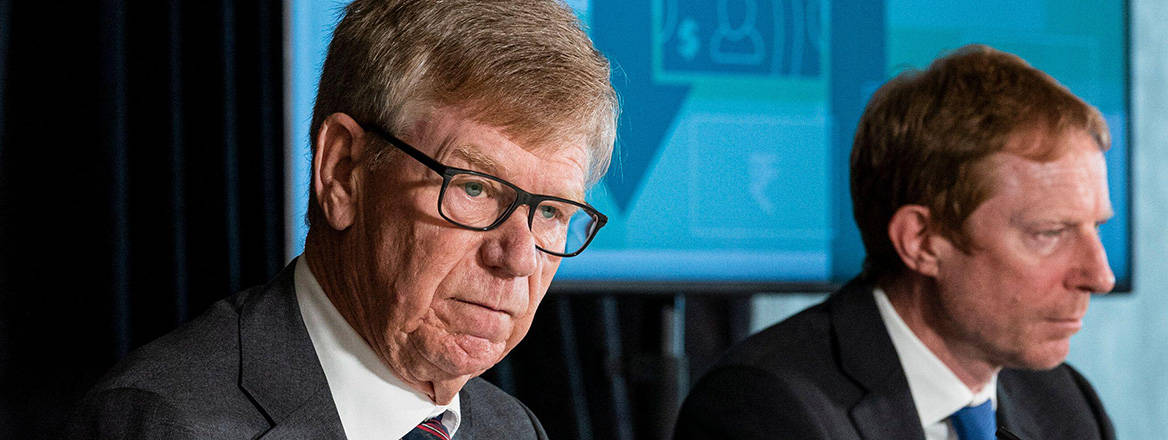In Need of a Solid Foundation: Canada’s Proposed Financial Crime Agency
Canada’s response to financial crime lags behind global peers. The planned financial crime agency is only part of the solution.
On 16 June, the much anticipated ‘Cullen Commission’ released its final report. Established in May 2019, the Commission was the first of its kind in Canada, mandated to look broadly at money laundering in the province of British Columbia (BC) and make recommendations to ‘address the conditions which have enabled money laundering to flourish’. Offering over 1,800 pages of detail and 101 recommendations, it certainly found plenty of evidence of money laundering – and of problems in Canada’s mishmash of enforcement regimes.
Yet whether by omission or because it was focused on the province of BC rather than the maze of provincial and federal agencies that together – as a federal union – comprise Canada’s attempts to tackle economic crime, the Cullen Commission did not offer an unbiased, systemic review of the financial crime legislation and enforcement that Canada so desperately needs.
Unfortunately, Canada has nowhere else to look for such a review: despite receiving a critical review from the Financial Action Task Force in 2016 and a series of financial crime scandals and revelations, there has been no clearly articulated government analysis of what gaps need to be filled legislatively or institutionally, what policy responses need to be strengthened, or – conversely – what might already be working well. We are left, in other words, knowing there’s a problem but with little insight into how to fix it, who to blame, or even what is working well behind the scenes.
Of course, none of this has stopped Canada from trying to tackle financial crime. Indeed, the first part of 2022 alone has already been significant in terms of measures to combat financial and economic crime, sanction international bad actors, and deal economically with domestic threats to security and prosperity. For the first time, Canada used the federal Emergencies Act to implement financial measures to put an end to an illegal protest in Ottawa. Canada also deployed swift and sweeping multilateral financial sanctions against Russia. These sanctions have dug deeper, been more robust, and arguably been more creative than anything Canada has seen since the Special Economic Measures Act (SEMA) was first passed in 1992.
It is also true that the financial and economic measures Canada has implemented over the past six months are less a revolution and more an evolution. Over the past two decades at least, Canada has consistently worked to improve its ability to combat all kinds of financial and economic crime and keep up with international norms and obligations.
Despite two decades of efforts to tackle economic crime, Canada continues to be an international laggard
Yet despite two decades of efforts to tackle economic crime, Canada continues to be an international laggard – perhaps because time has never been taken to study the problem on a nationwide level. There is certainly compelling evidence that Canada is failing to capture, arrest and successfully prosecute perpetrators of terrorist financing, sanctions evasion activities, and money laundering. What is not known, of course, is why. Is it a problem with investigative powers and the collection of evidence? Is Canada’s financial intelligence unit, FINTRAC, disclosing the wrong information or information that is not useful to investigators and/or prosecutors? Is the information too difficult to understand? Does Canada lack specialised investigators and/or prosecutors who understand financial intelligence, terrorism and other security issues like sanctions evasion and kleptocracy? Are financing investigations simply not a resourcing priority? We have no answers to these questions.
Against this backdrop, the most high-profile way the current government has pledged to address Canadian shortcomings in financial and economic crime is through the establishment of a financial crime agency. This was a Liberal campaign promise during the 2021 election, and the 2022 budget allots C$2 million for the development of an agency to ‘quickly respond to complex and fast-moving cases of financial crimes’. Canada’s proposal comes against a backdrop of tightening international measures to combat all kinds of financial crime, such as the EU’s recent proposal to criminalise sanctions violations and the UK’s economic crime bill.
But there are two big unknowns about Canada’s proposed financial crime agency: the specific problems the government thinks this new agency will solve; and the form the new agency will take.
At present, the proposed mandate for the agency is very broad, with its ‘sole purpose’ being to investigate financial crimes including money laundering, insider trading, organised crime, and fraud. But details are lacking. The government has given very little indication of what this agency’s mandate will be, how it will be located within current bureaucratic structures and institutions, or how it will work with existing bodies that cover this ground like the Royal Canadian Mounted Police and FINTRAC.
It's possible that the government has been deliberately short on details because it is conducting an in-depth needs assessment, although there is no public evidence of this, nor is there any indication that third parties from academia or the private sector have been consulted. However, it is more likely that a tiger does not change its stripes: Canada is unlikely to undertake an expensive and time-consuming legislative and institutional review of the sort it has failed to do in the past; instead, the government is probably looking for the quickest and cheapest way to implement this campaign promise.
In any event, it appears that there will be a financial crime agency of some kind; and so, the practical question is what kind it will be. The information we have to date suggests two possible models for such an agency: a fusion centre or a stand-alone agency.
A new agency would require wide-reaching operational responsibilities if its success is not to be restricted
The fusion centre approach involves housing representatives from multiple departments and agencies under one roof to foster collaboration and information sharing. This would probably be the easiest to implement – it could potentially be stood up without much change to existing investigative authorities and models. However, starting up a fusion centre will surely come with growing pains. For instance, Canada’s Integrated Terrorism Assessment Centre was established years ago, but has only recently come into its own. Staffing does not appear to have been a priority for many organisations tasked with sending employees, a reality reflected in its abilities (or lack thereof). There are many lessons to be learned from this and other such experiences.
Alternatively, a separate stand-alone agency might hold more promise of real change, but it would likely require significant new enabling legislation to set its mandate, powers and limits. Done properly, this would be a costly and time-consuming endeavour, and there is no guarantee it would fix many of the (largely unarticulated) issues in financial crime investigation and enforcement in Canada. On the contrary, some persistent problems in terms of coordination and information sharing could be exacerbated under a separate agency model – adding another layer of bureaucracy and yet another silo.
In either case, information sharing and delineation of responsibilities will almost certainly be ongoing issues: there are bound to be investigations that cross over into other agencies’ areas of responsibility. This is in fact a central feature of financial crime as it is inherently global, cross-border and difficult to concretely categorise. Thus, a new agency would require wide-reaching operational responsibilities if its success is not to be restricted. The skills needed to investigate financial crimes are transferable, whether the crime at hand is fraud, terrorist financing, sanctions evasion, money laundering, or ransomware payments.
The ideal outcome for Canada is to establish a new agency or fusion centre founded on a robust policy analysis of the strengths, gaps and weaknesses in the country’s current regime.
Whatever the answer, effective policy responses need to be built on a clear analysis and understanding of the national risk profile, and must then be constantly reevaluated in response to changing threats, opportunities and societal pressures. The creation of a new agency may be an important part of this process, but the agency must be informed by a clearly articulated mission, something Canada currently lacks.
The views expressed in this Commentary are the authors’, and do not represent those of RUSI or any other institution.
Have an idea for a Commentary you’d like to write for us? Send a short pitch to commentaries@rusi.org and we’ll get back to you if it fits into our research interests. Full guidelines for contributors can be found here.
WRITTEN BY
Jessica Davis
RUSI Associate Fellow, CFS
Michael Nesbitt
- Jim McLeanMedia Relations Manager+44 (0)7917 373 069JimMc@rusi.org



